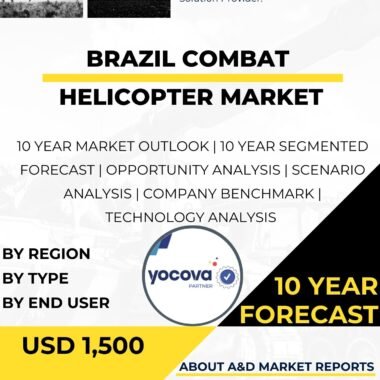Description
Canada’s combat helicopters serve as indispensable assets in the Canadian Armed Forces, providing crucial support and firepower on the battlefield. These advanced rotary-wing aircraft are capable of conducting a wide range of missions, including close air support, anti-armour operations, reconnaissance, and troop transport. Canada’s commitment to maintaining a modern and capable fleet of combat helicopters is rooted in its dedication to national security, sovereignty, and the protection of its military personnel.
Combat helicopters play a significant role in enhancing the Canadian Armed Forces’ capabilities in both domestic and international operations. They are particularly valuable in scenarios where terrain and logistical challenges make it difficult for ground forces to access certain areas.
One of the primary roles of combat helicopters is close air support (CAS). Helicopters equipped with sophisticated weapons systems can provide precise and immediate fire support to ground forces engaged in combat with enemy forces.
The ability of combat helicopters to loiter above the battlefield for extended periods allows them to respond quickly to calls for fire support, providing critical assistance to troops on the ground and minimizing the risk of collateral damage.
Canada’s combat helicopters are also highly effective in conducting anti-armour operations. Helicopters armed with guided anti-tank missiles can engage and neutralize enemy armoured vehicles, enhancing the Canadian Armed Forces’ ability to counter armored threats.
Moreover, the reconnaissance capabilities of combat helicopters are invaluable in providing real-time intelligence to ground forces and command centers. Equipped with advanced sensors and imaging technology, combat helicopters can conduct aerial reconnaissance to gather vital information about enemy positions, terrain, and potential threats.
The Canadian Armed Forces employ combat helicopters in various roles, depending on the specific needs of each mission. This versatility allows helicopters to be rapidly reconfigured and deployed for a wide range of tasks, making them essential assets in complex and dynamic operational environments.
Canada operates a fleet of combat helicopters, including the Boeing CH-147F Chinook and the Bell CH-146 Griffon. The CH-147F Chinook is a twin-engine, heavy-lift helicopter capable of transporting troops and equipment over long distances.
The Chinook’s cargo capacity and external lift capabilities make it an essential asset for supporting Canadian forces in both domestic and international missions, particularly in challenging and remote locations.
The CH-146 Griffon is a multi-role utility helicopter used for a variety of missions, including troop transport, reconnaissance, and close air support. The Griffon’s flexibility and maneuverability make it well-suited for a wide range of operational requirements.
Canada’s commitment to maintaining a modern and capable fleet of combat helicopters is demonstrated through regular maintenance, upgrades, and training. The Canadian Armed Forces conduct comprehensive training programs to ensure that helicopter crews are proficient in operating these advanced aircraft effectively.
Training includes simulated exercises, scenario-based drills, and classroom instruction to enhance pilots’ ability to fly and employ combat helicopters in dynamic and high-stress situations.
The integration of new technologies and systems into Canada’s combat helicopter fleet reflects the country’s dedication to staying at the forefront of military aviation capabilities.
Canada invests in research and development to enhance the performance, survivability, and interoperability of its combat helicopters.
As part of multinational efforts, the Canadian Armed Forces participate in joint exercises and training with allied nations, promoting interoperability and coordination in combined operations.
Canada’s combat helicopters are essential in supporting domestic operations, including search and rescue missions, disaster relief efforts, and counter-narcotics operations.
The helicopters’ versatility and mobility allow them to quickly respond to emergencies and provide life-saving assistance in critical situations.
Additionally, combat helicopters contribute to Canada’s commitment to international peacekeeping and security efforts.
As part of multinational missions, combat helicopters play a crucial role in enhancing situational awareness, supporting ground forces, and conducting air interdiction operations.
The Canadian government collaborates with the defense industry to ensure the continuous improvement and modernization of its combat helicopter fleet.
Partnerships with domestic and international defense companies provide Canada with access to cutting-edge technologies and expertise, ensuring the country’s ability to meet its defense requirements effectively.
In conclusion, Canada’s combat helicopters serve as indispensable assets in the Canadian Armed Forces, providing vital support and firepower on the battlefield.
These advanced rotary-wing aircraft play a significant role in close air support, anti-armour operations, reconnaissance, and troop transport, enhancing the country’s military capabilities.
Combat helicopters are particularly valuable in scenarios where ground forces face challenges in accessing certain areas due to terrain and logistics.
The versatility of Canada’s combat helicopter fleet allows for rapid reconfiguration and deployment in various roles, making them essential assets in dynamic operational environments.
The Canadian Armed Forces conduct comprehensive training programs to ensure that helicopter crews are proficient in operating these advanced aircraft effectively.
Canada’s commitment to maintaining a modern and capable fleet of combat helicopters is demonstrated through regular maintenance, upgrades, and investment in research and development.
These efforts ensure that Canada’s combat helicopters remain at the forefront of military aviation capabilities, supporting domestic operations, international peacekeeping efforts, and the protection of national security and sovereignty.




